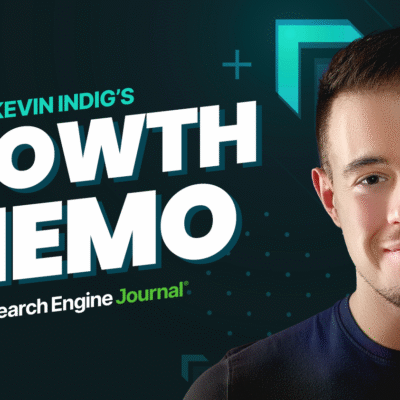The travel and tourism industry thrives on inspiration, discovery, and experience. While increasingly being challenged by social media and friend & family referrals, the first point of discovery for many travelers is still a search engine.
For operators in this competitive sector, ranging from boutique hotels and niche tour providers to vacation rental property owners and managers, as well as local attractions, a commanding online presence isn’t just beneficial – it’s fundamental to survival and growth.
This is where Local SEO emerges as a critical driver, connecting businesses with high-intent travelers actively seeking their next destination or experience.
As the search journey includes more AI-driven results, a sophisticated and adaptive Local SEO strategy is crucial.
This guide will navigate the essentials of Local SEO tailored for travel and tourism, incorporating strategies to thrive in the era of Google’s AI Overviews and other AI search platforms.
We’ll explore established best practices and new frontiers to help you enhance visibility, attract qualified leads, and convert searches into bookings.
Why Local SEO Is Non-Negotiable For Your Travel Business
Today’s travelers are digital nomads even before they pack their bags. They meticulously research, compare, and seek out authentic local experiences, with search engines as their primary guide.
A staggering 87% of consumers used Google to evaluate local businesses in 2022, according to BrightLocal, and this trend is particularly pronounced in the travel sector.
A robust Local SEO strategy ensures your offerings are prominent when potential customers conduct geographically specific searches. Consider these compelling reasons:
Hyper-Targeted Visibility
Local SEO puts your business in front of users searching for “boutique hotels in downtown Austin” or “eco-tours near me,” connecting you with an audience demonstrating clear local intent.
Increased Organic Traffic & Direct Bookings
Higher visibility in local search translates to more qualified traffic to your website, reducing reliance on commission-heavy Online Travel Agencies (OTAs).
Enhanced Credibility And Trust
Businesses appearing in top local search results, especially those with strong reviews, are perceived as more trustworthy. Indeed, according to Expedia group, studies show that 95% of travelers read reviews before booking
Competitive Edge
In a crowded marketplace, a sophisticated Local SEO strategy will differentiate your unique local offerings from larger, and perhaps less localized competitors.
Cost-Effectiveness
Compared to paid advertising, organic Local SEO can deliver a higher return on investment (ROI) over the long term by building sustainable visibility.
Building A Future-Proof Local SEO Strategy For Travel
To maximize visibility and capture the attention of modern travelers, operators must build their SEO strategy on several key pillars:
An Optimized Google Business Profile (GBP)
For businesses with a physical presence or those catering to broader service areas, a Google Business Profile is arguably the most potent Local SEO tool currently available.
It’s often the first interaction a potential customer has with a brand online, as Google Maps appears at the top of most local searches.
Here are the key GBP best practices you need to implement to leverage this important channel.
- NAP Optimization: Claim and thoroughly complete your GBP listing. Ensure the accuracy of your business Name, Address (or service area), Phone number (NAP), website, hours, and a compelling, keyword-rich description.
- Precise Categorization: Select the most accurate primary and secondary categories truly reflecting your business’s services, e.g., “Boutique Hotel,” “Adventure Tour Operator,” “Vacation Rental Agency.”
- Service Area Definition: For businesses without a fixed customer-facing location (like tour operators) or those serving a broader region, accurately define your service areas. Google advises that this shouldn’t exceed a 2-hour drive from your base. If you serve an area beyond this 2-hour range, you will need to find ways to convince Google via reviews from customers located in the broader area, local partnerships, or perhaps establishing an actual satellite location.
- Visual Storytelling: Invest in and share professional, high-resolution photos and videos of your business, properties, tours, amenities, local ambiance, guest experiences, team, etc.
- Active Engagement via GBP Posts: Regularly use GBP posts to share updates, special offers, upcoming events, new blog content, and local insights. This signals to Google that your business is active and engaged in your community.
- Review Management: Ask for and monitor customer reviews on GBP. Respond promptly and professionally to all reviews. This not only impacts rankings, but can also heavily influence booking decisions – 76% of consumers would update their negative review to a neutral or positive if a company acknowledged and fixed the complaint. Larger organizations with review volume across multiple locations will want to consider centralized and automated review management solutions such as BirdEye or BrightLocal.
- Proactive Q&A Management: Monitor and answer questions in the GBP Q&A section to provide valuable information and manage customer perceptions.
Maintain A High-Performance, Locally Optimized Website
Your website is your digital flagship, where inspiration meets transaction.
Websites remain a core focus for all businesses because they are still the place where primary product and service content is housed, as well as for travel businesses where bookings begin, even if they are ultimately completed off-site.
Several components are involved in optimizing a site for local search.
Strategic Keyword Research
Identify terms your target audience uses at each stage of the travel planning funnel, and particularly those used during the Engage and Booking stages.
Focus on location-specific queries (“luxury safari tours Kenya”), property types (“beachfront villas Maui”), and unique selling propositions (“pet-friendly cabins in the Blue Ridge Mountains”).
On-Page Optimization
Craft unique, keyword-rich Title tags, hierarchical heading structures, and internal/external links for every key bottom-of-the-funnel page.
Review keyword rank, search volume, organic search traffic, and conversion data to determine the primary pages to focus on.
Larger organizations will want to take a broader, scalable approach with page templates, but will still hone attention and focus on key locations where some level of authority and visibility has already been established, upon which momentum can be built.
Dedicated Location/Service Pages
If you cater to multiple distinct areas or offer specialized tours/services per location, create unique, detailed landing pages for each location.
These pages should include unique localized content (particularly if services or products differ by location), local team information, testimonials, contact details, and embedded Google Maps.
Image & Video Optimization
Use descriptive filenames and alt text for all visuals, incorporating relevant keywords and location data, where applicable.
Optimize image file sizes for fast loading (the WebP format is recommended) without compromising quality. This is admittedly a challenge for many in the travel space as images and video can make or break a property, tour, or experience listing.
Mobile-Friendly Design
With a significant portion of travel searches and bookings occurring on mobile (mobile devices made up 70.5% of global online travel traffic in 2024), a responsive, fast-loading website is critical.
Furthermore, site speed is a recognized ranking factor, for which tools like Google PageSpeed Insights and Core Web Vitals are available to gauge and diagnose potential bottlenecks.
Rich, Informative Content
Develop content marketing plans to address traveler questions and showcase your local expertise via detailed itineraries, destination guides, “things to do” lists, and booking information.
Structured Data (Schema Markup)
Implement relevant schema, such as:
- LocalBusiness.
- Hotel.
- LodgingBusiness.
- VacationRental.
- TouristAttraction.
- TouristTrip (for itineraries).
- Event.
- FAQPage.
- Article.
Schema helps search engines (and AI models) understand your content contextually.
Relevant, comprehensive structured data will improve your content’s eligibility for rich snippets and AI Overviews in Google, which are showing up in organic search results with increasing regularity across travel and all industries.
User Experience (UX) And Accessibility
A seamless UX with intuitive navigation, clear calls-to-action, and an easy booking process directly impacts conversion rates.
Further, ensuring your website is accessible to people with disabilities (based on WCAG Guidelines) broadens your target audience and is widely considered SEO best practice.
Building Authority With Off-Page SEO And Reputation Management
Off-page signals from relevant local and/or industry-specific sources significantly influence your local ranking and perceived trustworthiness.
Brand mentions, whether linked or not, are being recognized as an important factor in AI Search visibility.
Businesses looking to boost their local visibility need to consider their broad web presence, in addition to the content they control on their website and GBP.
- NAP Consistency & Local Citations: Ensure your Name, Address, and Phone number (NAP) are identical across all online directories (e.g., Yelp, TripAdvisor, local tourism sites). Inconsistent NAP can harm rankings. Larger operators with multiple locations will want to consider implementing a centralized Listings Management tool like SOCi or Yext.
- Strategic Link Building: Earn and obtain high-quality backlinks from relevant local organizations (tourism boards, chambers of commerce), travel blogs, local press, and complementary businesses.
- Local Partnerships & Community Engagement: Collaborate with nearby businesses (restaurants, activity providers, event organizers) for cross-promotion and local link opportunities. Sponsoring and/or physically participating in local events can also help build visibility and relevant local links.
- Local Influencer Collaboration: Partner with local travel and lifestyle influencers to tap into their engaged audiences with relevant content and messaging, thereby gaining authentic, local endorsements. These types of collaborations generally take time to establish and build trust, but can reap significant benefits by tapping into a loyal, local customer base.
Content Marketing: The Engine Of Local SEO And AI Visibility
High-quality, relevant content is fuel for both visibility in traditional organic and AI-driven search.
- Audience-Centric Content Strategy: Understand your ideal traveler and their journey. Create content that inspires, informs, and facilitates booking.
- Hyperlocal & Unique Storytelling: Develop blog posts, guides, videos, and itineraries highlighting your unique offerings and deep knowledge of the local area. Focus on what makes your experience or destination special, sharing authentic stories and insider tips.
- Answer Questions Directly: Create content, including dedicated FAQ sections, and directly answer common traveler queries. Incorporate a Question and Answer schema to clearly call out this content for search and LLM crawlers. This is vital for appearing in Google’s AI Overviews and being useful to other AI chatbots.
- Diverse Content Formats: Utilize blog articles, high-resolution photo galleries, engaging videos (destination spotlights, property tours, guest testimonials), interactive maps, and downloadable guides. Short-form video is highly effective on social media.
- Content Promotion: Share your content strategically via GBP, social media, email marketing, and local partnerships to maximize its reach and opportunity to be shared further.
Thriving In The Era Of AI Overviews And AI Search
We can’t have an SEO conversation today, Local or otherwise, without considering the impact of AI on search.
Google’s AI Overviews and other AI tools like Perplexity and ChatGPT are changing how users find information.
In a recent Whitespark study, it was determined that AI Overviews are appearing for a significant 68% of local business-type searches.
To optimize for this new paradigm at a local level, there are a few things to consider, some of which you’ll note are in line with the SEO recommendations made above:
- Prioritize E-E-A-T (Experience, Expertise, Authoritativeness, Trustworthiness): AI models, especially Google’s, are designed to prioritize information from sources that demonstrate the four qualities of E-E-A-T. Ensure your content is accurate, well-researched, or proprietary, written by experts (or showcases expertise), and your website projects credibility.
- Create Comprehensive, Factual, and Well-Structured Content: AI loves well-organized information. Use clear headings, bullet points, and ensure your content thoroughly covers a topic, directly answering common questions. This makes it easier for AI to parse and use your information for generating and displaying summaries.
- Optimize for Conversational & Question-Based Queries: Think about how users ask questions about your business, products, or services verbally or in natural language. Structure content around these queries (e.g., “What are the best family-friendly hotels in Orlando with a water park?”).
- Reinforce Entity Recognition: Ensure clear and consistent information about your business (your “entity”) across the web – your name, what you do, where you’re located, and unique offerings.
- Structured Data Matters Even More: As mentioned, schema markup helps search engines and AI Large Language Models (LLMs) understand the specifics of your content (business, products, etc), thereby improving its ability to be accurately represented in AI-generated results.
- Ensure Broad Web Presence and Citations: AI models like Perplexity cite their sources. Being mentioned and linked to from other authoritative travel sites, blogs, and news outlets can increase your chances of being referenced.
- Monitor Your Appearance in AI Search: While direct tracking in AI Overviews and other AI search platforms is still in development, consider leveraging new third-party tools and conducting manual checks to determine if and how your business or content is appearing in AI-generated responses for relevant queries.
Track, Analyze, And Adapt
Any worthwhile and effective Local SEO effort is backed by data.
Use Google Analytics, Google Search Console, and other SEO tools to monitor key metrics, including organic traffic, keyword rankings (especially local), Google Business Profile insights (views, clicks, calls, direction requests), conversion rates, and referral traffic from local sources.
This data will be key to helping you continually refine your strategy as modern SEO (and now GEO or AEO) is a moving target.
The Future Is Local And AI-Enhanced
Local SEO is no longer a niche tactic, but a foundational element of a successful digital marketing strategy for any travel and tourism operator.
By focusing on providing genuine value to travelers, creating exceptional local experiences, and meticulously optimizing your online presence across all relevant platforms, you can attract more customers.
As AI continues to reshape search, the emphasis on high quality, authoritative, and clearly structured content, along with a broad-based, brand-forward web presence, becomes even more important.
Embrace the principles and tactics here, stay agile, and you’ll be well-positioned to navigate the evolving digital landscape and welcome more guests through your virtual and physical doors.
More resources:
Featured Image: RobinRmD/Shutterstock





